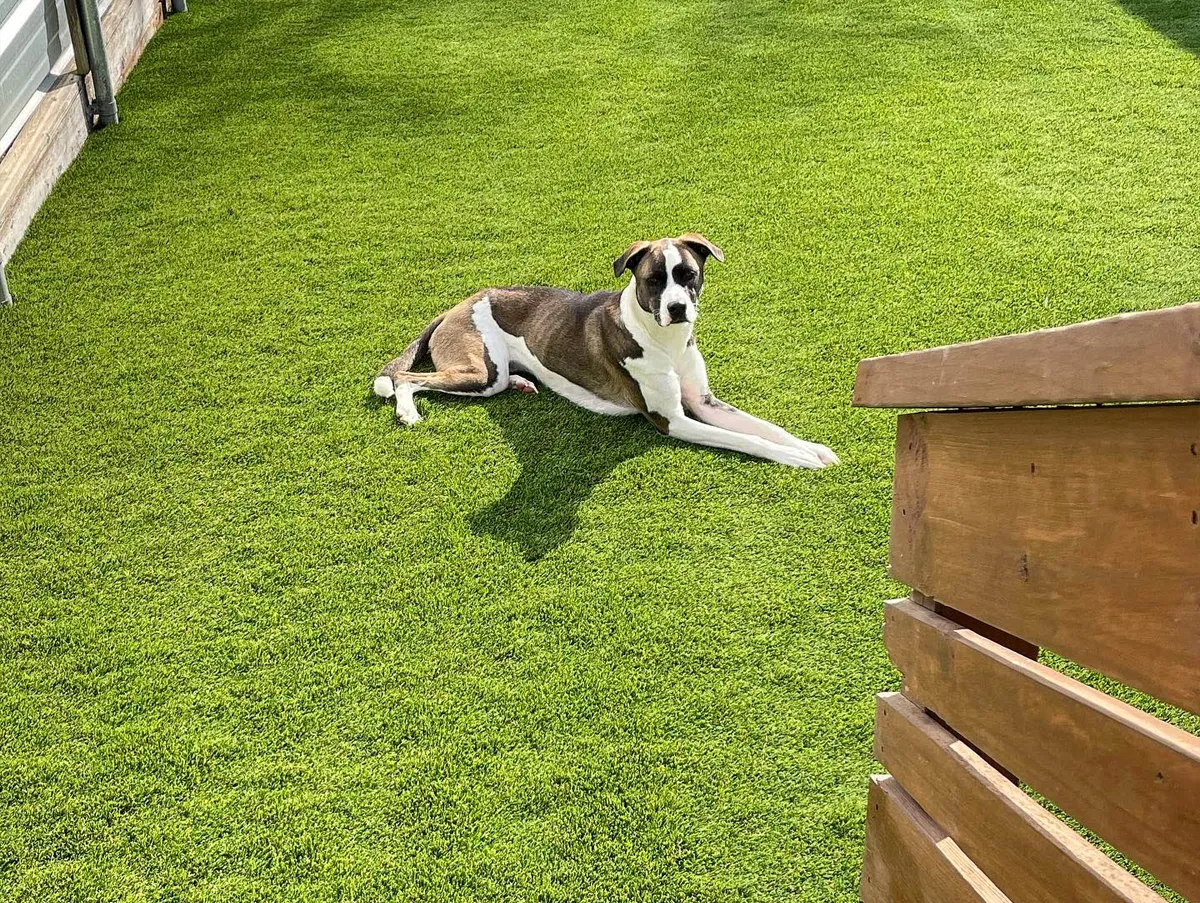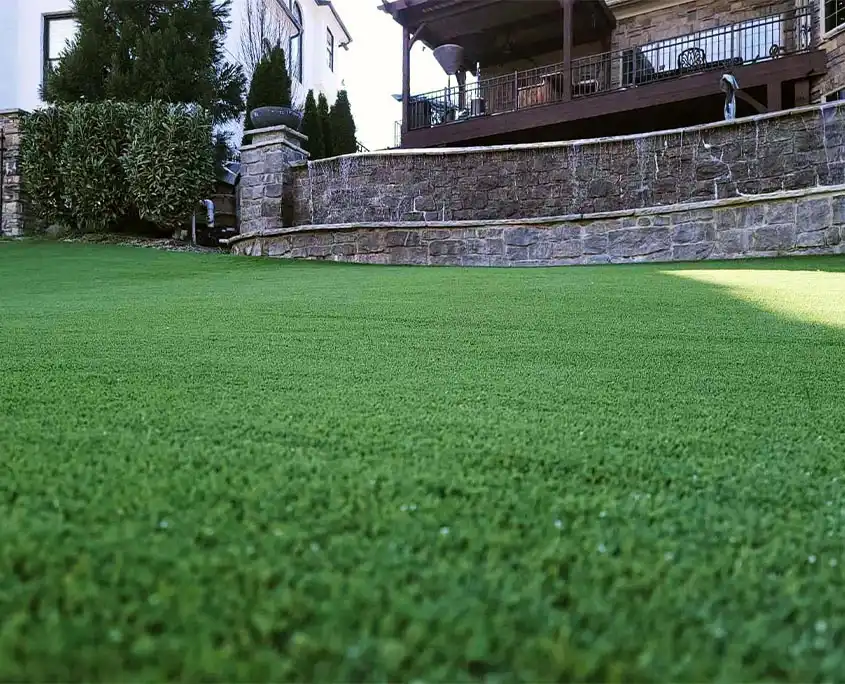High-Quality Arizona Turf Installation Solutions for Residences and Businesses
High-Quality Arizona Turf Installation Solutions for Residences and Businesses
Blog Article
Delve Into the Environmental Benefits of Opting for Artificial Turf Solutions
The adoption of synthetic grass services provides an engaging opportunity to address pressing ecological obstacles. By considerably minimizing water usage and reducing the application of hazardous chemicals, these options not only advertise sustainable landscaping but also shield neighborhood communities. The reduced carbon impact associated with reduced upkeep activities contributes to a much more sustainable strategy to land management. The ramifications of these advantages prolong beyond simple conservation efforts, increasing questions regarding their long-lasting influence on environment preservation and total eco-friendly balance. Discovering these measurements discloses an intricate interplay worth considering.
Water Conservation Benefits
Among the most significant advantages of synthetic grass is its capability to conserve water. Traditional grass yards need significant irrigation, specifically in areas susceptible to drought or water constraints. On the other hand, man-made turf does not require watering, significantly minimizing the general demand for water sources. This attribute is particularly useful in deserts where water deficiency is a pressing issue.
By eliminating the demand for regular watering, synthetic grass adds to lasting landscape practices and helps minimize the environmental effect of excessive water intake. Additionally, the preservation of water extends to the decrease of overflow, which can cause dirt erosion and river contamination.
In addition, the installment of synthetic grass enables property owners and districts to assign water resources more successfully, concentrating on essential uses such as alcohol consumption water and farming. The change in the direction of synthetic grass not only promotes responsible water usage yet additionally straightens with more comprehensive environmental objectives targeted at protecting natural sources.
As communities increasingly prioritize sustainability, the water conservation advantages of synthetic grass offer an engaging case for its adoption in industrial and household landscape design tasks.
Lowered Chemical Usage
The change to fabricated grass substantially lowers the reliance on chemical therapies frequently used in natural lawn maintenance. Typical grass monitoring typically entails the application of plant foods, chemicals, and herbicides to advertise growth and control pests. These chemicals can position risks to human wellness, local wild animals, and the environment, adding to soil and water contamination.
On the other hand, fabricated lawn gets rid of the demand for these unsafe substances. As soon as installed, it needs minimal upkeep, mainly containing regular cleaning and irregular infill replenishment. This reduction in chemical usage not just profits the instant atmosphere yet also adds to broader eco-friendly stability. By lessening the launch of artificial compounds into the ecological community, synthetic turf advertises healthier soil and water supply.
Furthermore, the absence of chemical overflow related to fabricated grass installations assists safeguard regional rivers from contamination, supporting aquatic life and maintaining biodiversity. Turf installation phoenix az. As areas significantly focus on sustainable techniques, going with synthetic turf offers a practical option that lines up with environmental conservation goals. Through this change, building owners can enjoy lush green rooms without jeopardizing environmental wellness, paving the means for an extra lasting future
Lower Carbon Footprint

Furthermore, the setup of fabricated grass can cause considerable water preservation. Natural yards call for significant quantities of water for watering, which not only contributes to the carbon impact related to water extraction and treatment however additionally strains regional water sources. In comparison, artificial grass requires very little upkeep, needing no watering, therefore substantially lowering water use and its connected power prices.
In addition, the longevity of synthetic grass adds to its decreased carbon influence. With a life-span of as much as 15 years or even more, the requirement for regular substitutes is diminished, resulting in less waste and lower find more information power intake in production and throwing away typical turf options. In general, man-made grass provides a sustainable choice for ecologically conscious landscaping.
Habitat Conservation
Environment conservation is an essential factor to consider in the debate over landscape design options, especially when comparing synthetic turf to all-natural lawn. All-natural lawn lawns typically require extensive maintenance, consisting of using herbicides, plant foods, and pesticides, which can detrimentally affect local ecosystems. These chemicals can seep right into the soil and rivers, harming indigenous vegetation and fauna and disrupting regional habitats.
On the other hand, synthetic grass offers an opportunity to lower the eco-friendly impact of landscape design. By opting for synthetic lawn, house owners can minimize the disruption of all-natural habitats connected with traditional yard care methods. Artificial grass removes the requirement for dangerous chemicals, thus securing neighboring wildlife and keeping the integrity of surrounding environments. The setup of fabricated lawn can lead to the conversion of previous yard locations right into even more biodiverse landscapes, such as pollinator yards or native plant areas, which can support local wild animals.
Ultimately, the transition to synthetic grass not only conserves water and decreases maintenance initiatives yet also cultivates an extra harmonious partnership between human activities and the native environment, advertising environment preservation in the process.
Long-Term Sustainability
Long-lasting sustainability is an essential consider assessing the benefits of synthetic grass over conventional grass yards. One of one of the most significant advantages of synthetic grass is its durability; Discover More it can last as much as 15-20 years with minimal upkeep, whereas natural yard requires frequent reseeding and substitute. This durability lowers the requirement for constant sources, such as water, fertilizers, and pesticides, which are vital for maintaining a healthy yard yard.
In addition, synthetic grass adds to a decrease in carbon discharges connected with yard treatment equipment. Traditional grass typically call for gas-powered mowers, leaners, and blowers, all of which add to air pollution. Arizona turf. On the other hand, synthetic grass removes the need for such devices, advertising a cleaner atmosphere
Additionally, the production web link of synthetic lawn increasingly uses recycled materials, boosting its sustainability profile. As producers embrace eco-friendly methods, the ecological footprint of artificial turf continues to reduce.

Final Thought
The fostering of synthetic grass services presents considerable ecological advantages, including considerable water preservation, minimized dependence on hazardous chemicals, and a reduced carbon impact. Additionally, man-made lawn aids in protecting natural habitats by reducing land disruption and advertising lasting sustainability via the use of long lasting products. Collectively, these variables emphasize the potential of synthetic grass to add favorably to environmental health and wellness and use a sensible choice to typical landscape design techniques in a progressively resource-conscious globe.
In contrast, artificial turf does not need watering, substantially decreasing the general demand for water resources. By lessening the release of artificial compounds right into the environment, fabricated turf advertises healthier soil and water systems.
Moreover, the setup of artificial grass can result in significant water preservation. In comparison, synthetic turf requires marginal upkeep, needing no watering, thus considerably lowering water usage and its linked energy expenses.

Report this page